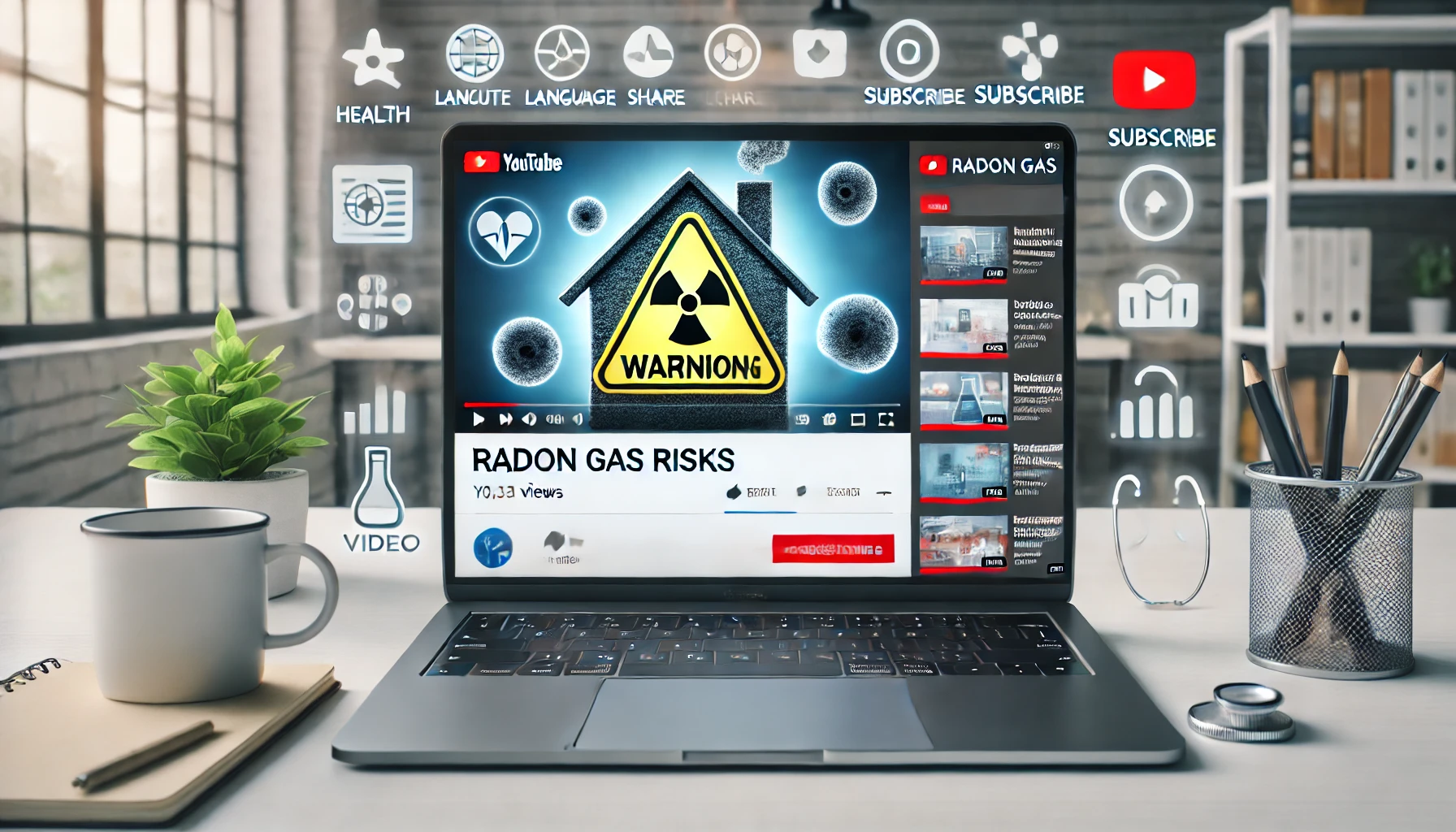Harnessing YouTube for Radon Awareness: Bridging Gaps in Public Health Communication
The study explores YouTube's potential to raise awareness about radon risks, highlighting the platform's underutilization and the need for more engaging, multilingual content to improve public health communication. Despite some successful practices, overall awareness and effective use of YouTube features remain insufficient.

A study by Jose Sixto-Garcia, Berta Garcia-Orosa, Eladio Gonzalez-Lois, and Noel Pascual-Presa from the University of Santiago de Compostela investigates the potential of YouTube as a medium for disseminating information about radon risks. Radon, a naturally occurring radioactive gas, is the second leading cause of lung cancer after smoking and poses significant public health risks, particularly in indoor environments where it can accumulate to hazardous levels. Despite its serious health implications, public awareness about radon is limited, and traditional media coverage is insufficient and often ineffective in conveying the risks associated with radon exposure.
Exploring YouTube's Potential for Radon Awareness
The study examines how YouTube, a platform with over 2 billion logged-in monthly users, can be leveraged to enhance public understanding and awareness of radon risks. It identifies all YouTube channels containing videos about radon, categorizing them based on geographical regions, languages used, the number of subscribers, and total video views. Using a mixed methodological model that combines quantitative and qualitative approaches, the researchers analyze the themes, narratives, and dissemination strategies employed by these channels to communicate information about radon.
A Scarcity of Radon-Related Content
One of the key findings of the study is the limited presence of radon-related content on YouTube. Out of the vast number of channels and videos on the platform, only a small fraction are dedicated to discussing radon. This scarcity of content is concerning given the public health risks posed by radon exposure. The study reveals that most of the radon-related videos are in English, which restricts accessibility for non-English-speaking audiences. This language barrier highlights the need for more diverse and multilingual content to ensure broader reach and impact.
Challenges in Effective Engagement
Moreover, the research indicates that many radon-focused channels do not fully utilize YouTube’s features to engage with their audience effectively. Community engagement is crucial for raising awareness and fostering discussions about health risks, yet many channels fail to create interactive and participatory content. The absence of community engagement and the underutilization of YouTube’s functionalities, such as live streaming, community posts, and cross-platform promotion, limit the effectiveness of these channels in disseminating critical health information.
Echo Chambers and Public Awareness
The study also explores the concept of echo chambers on YouTube, where information is reinforced within a closed group without being challenged or scrutinized. Interestingly, the researchers found no significant presence of echo chambers concerning radon-related content. This finding contrasts with other health topics, such as vaccines, where echo chambers are prevalent and contribute to the spread of misinformation. The lack of echo chambers in radon discussions may indicate that the topic has not yet garnered enough attention to form such isolated groups, or it could reflect the overall low level of public interest and awareness.
Despite some successful channels demonstrating good practices in communicating radon risks, the general awareness and understanding of radon on YouTube remain insufficient. The study highlights the need for better utilization of digital platforms to enhance public health communication. Effective strategies include creating engaging and interactive content, leveraging community features, and ensuring multilingual accessibility to reach a broader audience.
The Path Forward: Enhancing Digital Health Communication
The research underscores the potential of YouTube as a powerful tool for health communication, given its extensive reach and the increasing consumption of digital media. However, it also points out the challenges and limitations in using the platform to effectively raise awareness about radon risks. These include the scarcity of dedicated content, language barriers, and the lack of community engagement. To address these issues, the study suggests that public health organizations and content creators should focus on producing high-quality, engaging, and accessible content about radon. They should also consider collaborating with influencers and leveraging YouTube’s features to foster a more interactive and informed community.
While YouTube holds promise as a medium for disseminating information about radon risks, there is a significant gap in current efforts to utilize the platform effectively. By addressing these gaps and implementing best practices, it is possible to enhance public understanding and awareness of radon, ultimately contributing to better health outcomes. The study by Sixto-Garcia and colleagues provides valuable insights into the current state of radon communication on YouTube and offers practical recommendations for improving the effectiveness of digital health communication strategies.
- FIRST PUBLISHED IN:
- Devdiscourse










